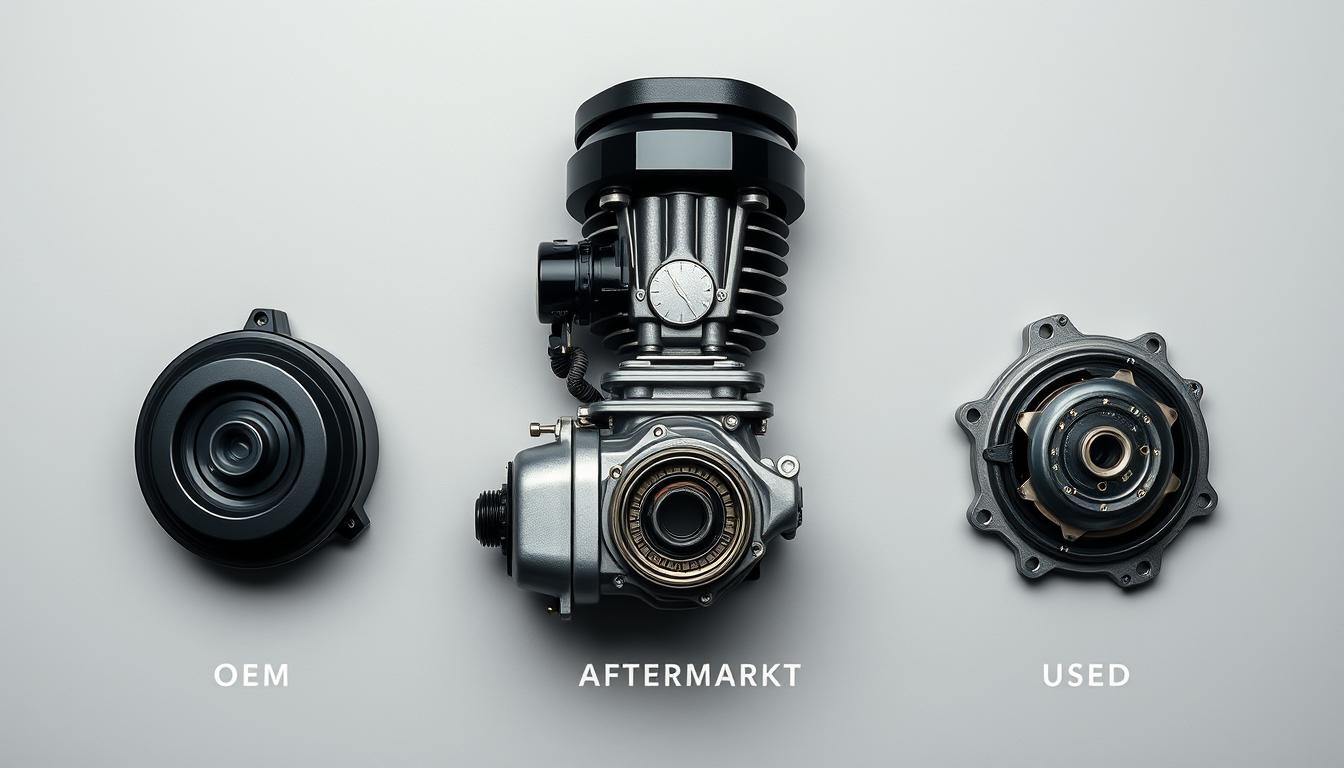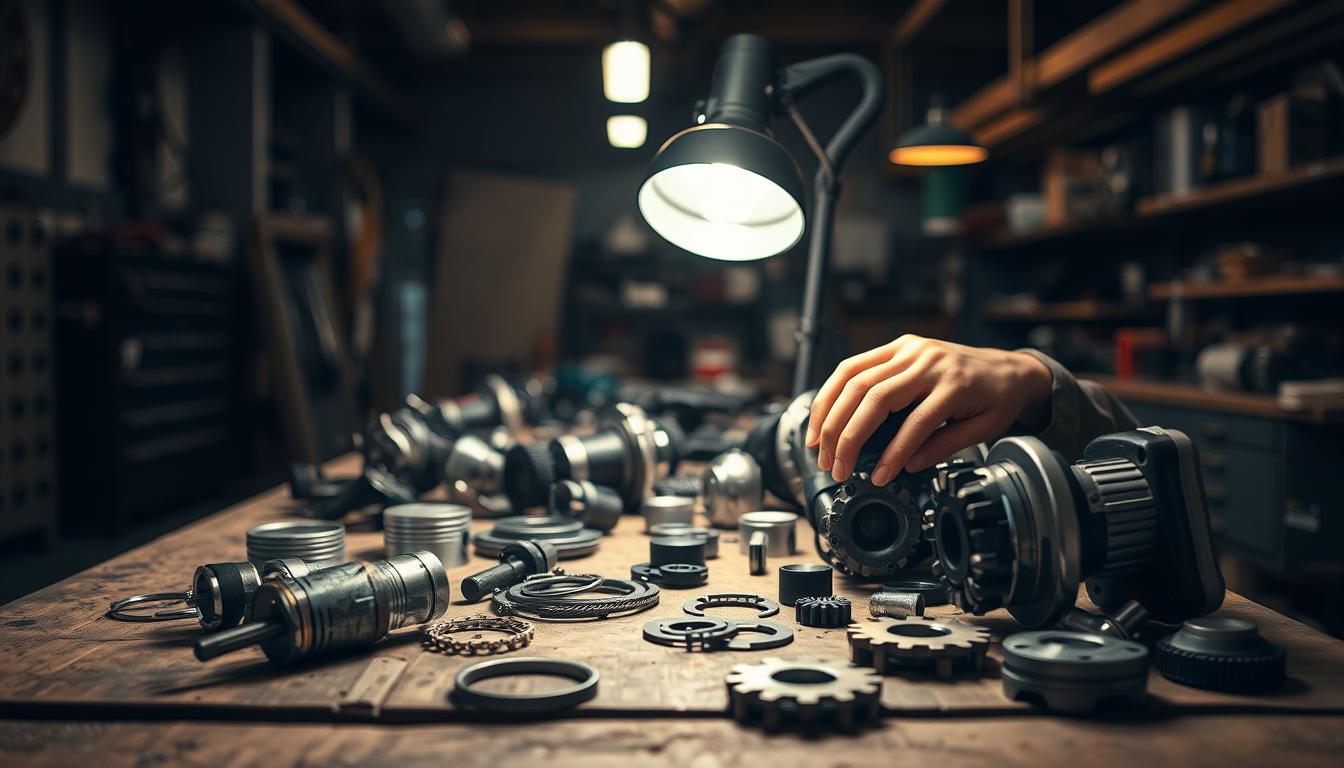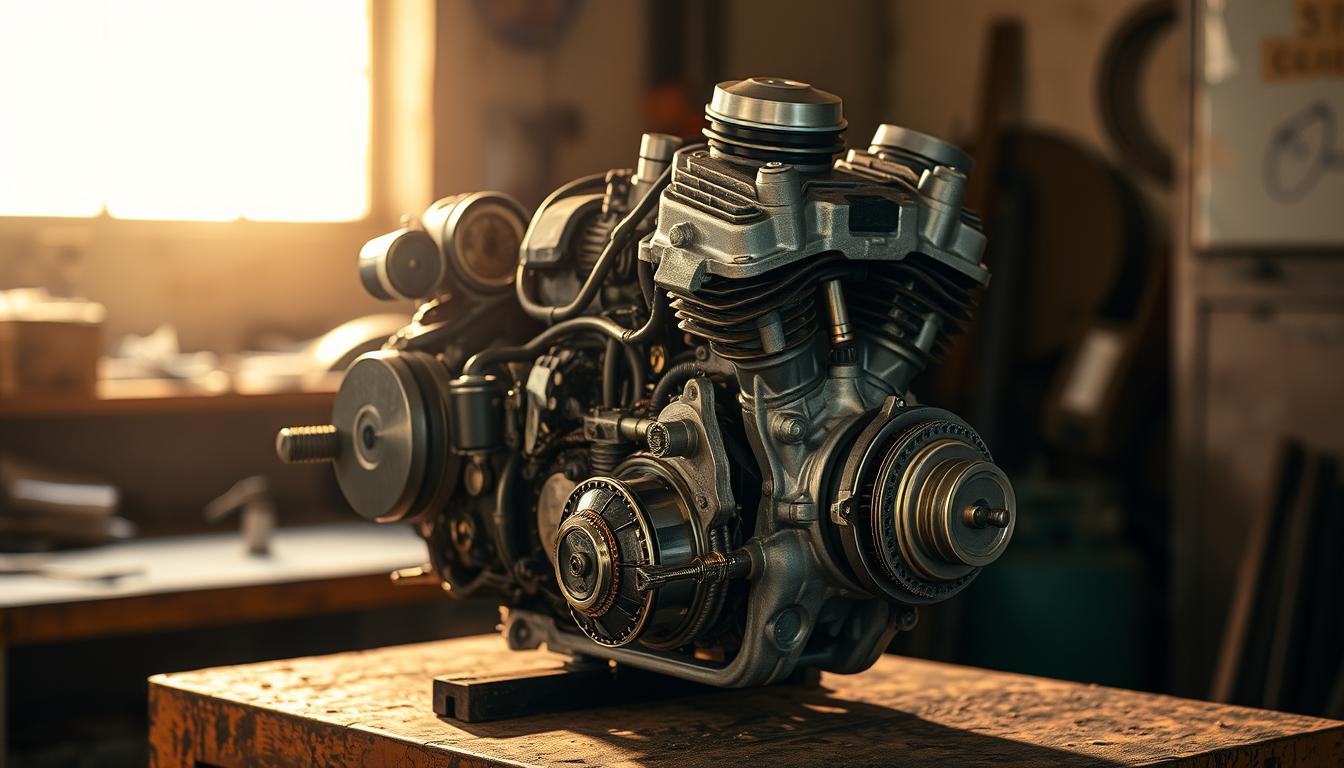When it comes to repairing or upgrading your motorcycle, do you know which type of part is the best fit for your needs? Whether you’re fixing a damaged bike or enhancing its performance, the choice between OEM, aftermarket, and used parts can make a big difference. Each option has its own advantages and drawbacks, and understanding these can save you time, money, and effort.
OEM parts are made by the original equipment manufacturer, ensuring they match your bike’s exact specifications. They’re reliable but often come with a higher price tag. On the other hand, aftermarket parts are produced by third-party companies. They can be more affordable and offer a wider range of options, but quality can vary. Lastly, used parts are typically the cheapest, but they require careful inspection to ensure they’re in good condition.
Choosing the right part isn’t just about cost—it’s about quality, fit, and safety. Whether you’re repairing a Honda, Yamaha, or any other brand, knowing the differences can help you make an informed decision. Let’s dive deeper into what each option offers.
Key Takeaways
- OEM parts are made by the vehicle’s manufacturer and match original specifications.
- Aftermarket parts are produced by third-party companies and can be more affordable.
- Used parts are often the cheapest but require careful inspection for reliability.
- Quality and fit are crucial when choosing parts for your motorcycle.
- Safety should always be a top priority when selecting replacement parts.
Introduction to Motorcycle Parts Options
Selecting the right motorcycle part can significantly impact your bike’s performance and safety. Whether you’re fixing a damaged vehicle or upgrading its features, the type of part you choose matters. It’s not just about cost—it’s about ensuring your bike runs smoothly and safely on the road.
Setting the Stage: Why Your Part Choice Matters
Your motorcycle’s performance relies heavily on the quality of its parts. A poorly fitting or low-quality component can lead to frequent repairs and even accidents. For example, using a part made by the original equipment manufacturer ensures precise fitment and reliability. On the other hand, aftermarket parts might offer affordability but can vary in quality.
In Australia, where road conditions can be challenging, choosing the right part is even more critical. A high-quality replacement part can save you money in the long run by reducing maintenance costs and improving your bike’s longevity.
An Australian Perspective on Quality and Cost
Australians often face the challenge of balancing quality with cost. While aftermarket parts might seem like a budget-friendly option, they may not always meet the standards of original equipment. For instance, a genuine part from the vehicle manufacturer ensures compatibility and often comes with a warranty, providing peace of mind.
Local suppliers play a key role in this decision. They can offer advice on the best part for your specific model and needs. Whether you’re repairing a classic bike or a modern vehicle, understanding the differences between part options is essential for making an informed choice.
Understanding OEM Motorcycle Parts
If you’re looking to repair or upgrade your motorcycle, understanding the origins of OEM parts is essential. These components are made by the original equipment manufacturer, ensuring they match your bike’s exact specifications. Whether you ride a Honda, Yamaha, or another brand, OEM parts are designed to deliver the same quality and performance as the ones your bike came with.
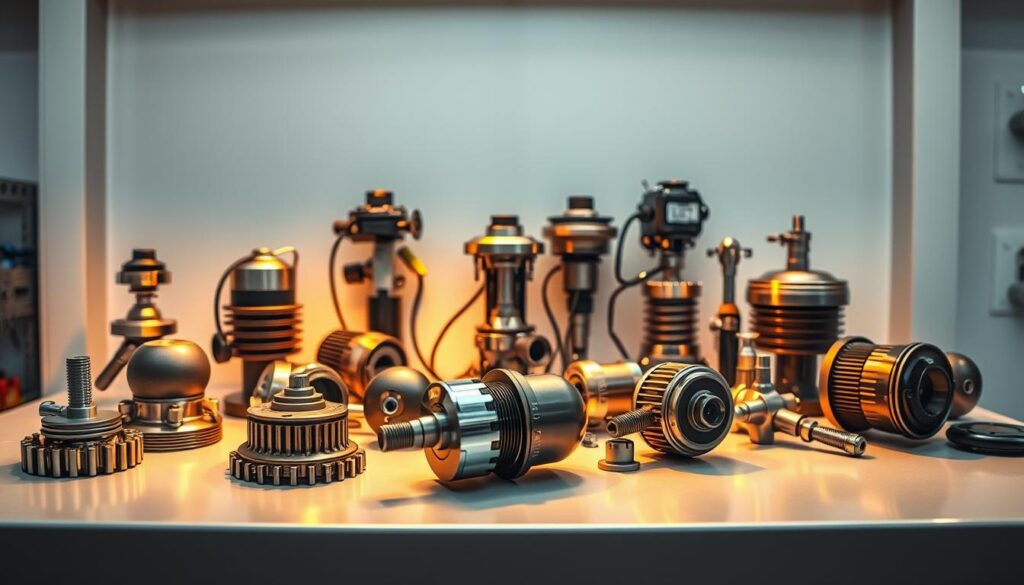
Definition and Manufacturer Origins
OEM parts are produced by the same company that built your motorcycle. This means they’re crafted to the same standards and tested rigorously for reliability. For example, brands like Mercedes and Volvo ensure their parts meet strict safety and performance criteria. This level of precision ensures a perfect fit every time.
Quality, Fit, and Warranty Considerations
One of the biggest advantages of OEM parts is their warranty. Most come with a 1-2 year guarantee, giving you peace of mind. They’re also tested extensively by the manufacturer, so you know they’ll perform as expected. While they might cost more upfront, their longevity and safety make them a worthwhile investment.
“OEM parts are the gold standard for motorcycle repairs, offering unmatched compatibility and reliability.”
When it comes to maintaining your bike, choosing OEM parts ensures you’re getting the best. They’re designed to keep your motorcycle running smoothly and safely, even in Australia’s challenging road conditions. Whether it’s a critical component like brakes or a simple replacement, OEM parts deliver the performance you need.
Exploring Aftermarket Motorcycle Parts
When considering motorcycle repairs, aftermarket parts often emerge as a popular choice for their affordability and versatility. These components are produced by third-party companies, offering a wide range of options for riders. Unlike parts made by the original manufacturer, aftermarket parts can be tailored to specific needs, making them a flexible solution for many.
Advantages and Cost Benefits
One of the biggest draws of aftermarket parts is their cost-effectiveness. They are typically cheaper than OEM parts, making them ideal for riders on a budget. Additionally, aftermarket options often come in a variety of styles and designs, allowing for customisation. For example, brands like ZF REMAN specialise in high-quality remanufactured parts that meet or exceed original specifications.
Another advantage is the availability. Aftermarket parts are widely accessible through local suppliers and online shops, ensuring you can find what you need quickly. This is particularly useful in Australia, where sourcing specific components can sometimes be challenging.
Potential Risks and Compatibility Issues
While aftermarket parts offer many benefits, they do come with some risks. One major concern is compatibility. Not all aftermarket parts are designed to fit every model, which can lead to installation issues. It’s essential to double-check the specifications before purchasing.
Quality can also vary significantly. Some aftermarket parts may wear out faster than OEM options, leading to more frequent replacements. This can offset the initial cost savings over time. Always look for reputable brands and read reviews to ensure you’re getting a reliable product.
| Feature | Aftermarket Parts | OEM Parts |
|---|---|---|
| Cost | Lower | Higher |
| Quality | Variable | Consistent |
| Compatibility | May vary | Guaranteed |
| Warranty | Limited | Included |
When choosing aftermarket parts, it’s crucial to weigh the pros and cons. While they can save you money upfront, their long-term performance may not always match that of OEM parts. If you’re unsure, seek advice from a professional mechanic to ensure you’re making the right choice for your motorcycle.
Evaluating Used Motorcycle Parts
Choosing used motorcycle parts can be a cost-effective solution, but it requires careful evaluation to ensure reliability. These parts are typically sourced from salvaged bikes, private sellers, or dealerships. While they offer significant savings, their condition can vary widely, making thorough inspection essential.
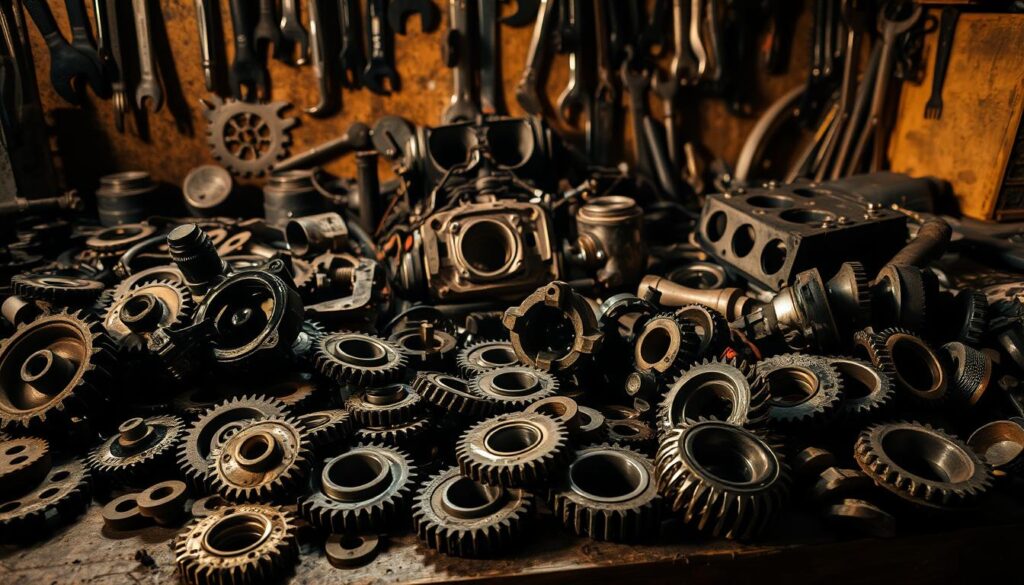
Assessing Condition and Reliability
Used parts often come with a history of wear and tear. It’s crucial to check for signs of damage, such as cracks, rust, or previous repairs. For example, parts like brakes or suspension components should be inspected for structural integrity. A visual check alone isn’t enough—ask for maintenance records or photographic evidence to verify their condition.
Availability of used parts is generally higher for common models. Rare or older bikes may have fewer options, so it’s worth exploring multiple sources. If you’re unsure about a part’s history, seeking advice from a professional mechanic can provide peace of mind.
Here’s a quick comparison to help you weigh the pros and cons:
| Feature | Used Parts | New Parts |
|---|---|---|
| Cost | Lower | Higher |
| Quality | Variable | Consistent |
| Availability | Common models | All models |
| Warranty | Rarely included | Often included |
While used parts can save you money, safety should never be compromised. Always prioritize components that meet your bike’s specifications and ensure they’re in good working condition. Whether you’re repairing a classic or modern vehicle, taking the time to evaluate used parts can lead to a reliable and cost-effective solution.
OEM vs. Aftermarket vs. Used
Deciding between different types of motorcycle parts can feel overwhelming, but understanding their unique benefits simplifies the process. Each option—whether it’s an oem part, an aftermarket part, or a used component—has its own strengths and weaknesses. By comparing their quality, cost, and safety, you can make an informed choice that suits your needs.
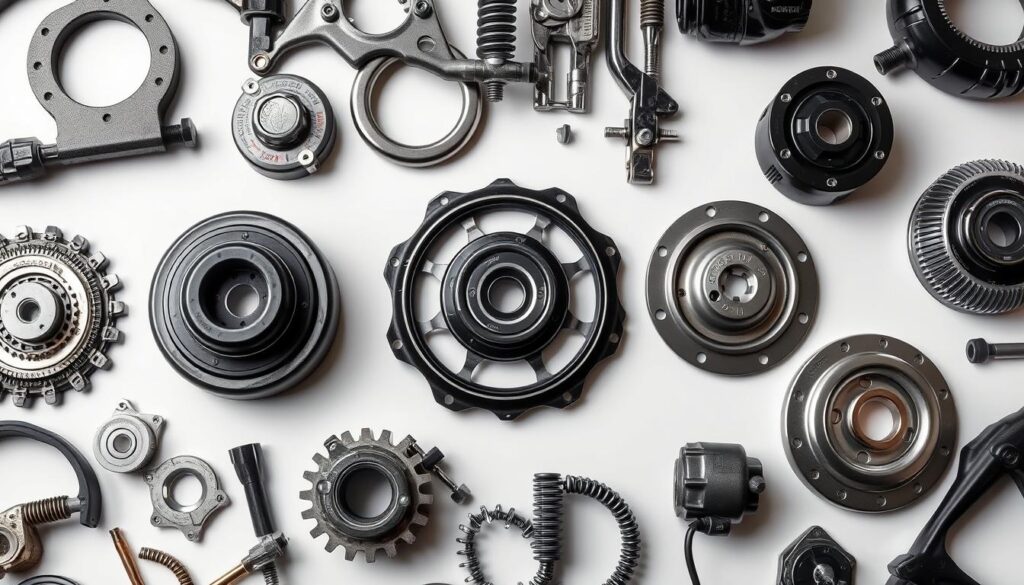
Side-by-Side Comparison of Quality, Cost, and Safety
When it comes to quality, oem parts are unmatched. Made by the original manufacturer, they ensure a perfect fit and reliable performance. However, this precision comes at a higher price. On the other hand, aftermarket parts are more affordable but vary in quality. While some match OEM standards, others may fall short, potentially affecting your bike’s safety.
Used parts are often the cheapest option, but their condition can be unpredictable. Thorough inspection is essential to avoid parts that might fail prematurely. Here’s a quick comparison:
| Feature | OEM Parts | Aftermarket Parts | Used Parts |
|---|---|---|---|
| Quality | High | Variable | Unpredictable |
| Cost | Higher | Lower | Lowest |
| Safety | Guaranteed | Varies | Requires Inspection |
When to Choose Each Option Based on Your Needs
If you’re repairing a newer vehicle and want peace of mind, oem parts are the way to go. They come with warranties and ensure your bike performs as intended. For older models or budget-conscious riders, aftermarket parts offer flexibility and affordability. Just be sure to choose reputable brands to avoid compatibility issues.
Used parts are ideal for rare or classic bikes where new components are hard to find. However, always inspect them carefully or consult a mechanic to ensure they’re in good condition. As one expert noted,
“The right part depends on your bike, your budget, and your priorities.”
Ultimately, your choice should balance cost, quality, and safety. Whether you’re fixing a daily commuter or a weekend cruiser, understanding these differences empowers you to make the best decision for your motorcycle.
Factors to Consider for Your Motorcycle Repairs
Your motorcycle repair decisions can shape its performance, safety, and long-term value. Whether you’re fixing a damaged bike or upgrading its features, several factors influence your choice of parts. Balancing cost, quality, and reliability is essential to ensure your bike stays roadworthy.
Budget, Warranty, and Insurance Implications
Your budget plays a significant role in deciding between different types of parts. While aftermarket options are often cheaper, they may not always meet the same standards as oem parts. Cheaper alternatives can compromise warranty conditions or technical fit, leading to higher costs in the long run.
Insurance policies can also affect your decision. Some insurers require the use of oem parts for repairs to maintain coverage. Always check your policy to avoid unexpected expenses. Additionally, warranties on aftermarket parts are typically shorter, so weigh the benefits against potential risks.
Availability and Local Supplier Insights in Australia
In Australia, local availability and supplier reliability are crucial factors. Genuine parts are often easier to find for newer models, but older or discontinued bikes may require aftermarket solutions. Local suppliers can provide valuable advice on the best part for your specific needs.
For example, some aftermarket brands offer high-quality options that are nearly indistinguishable from oem parts. However, sourcing these can be challenging in remote areas. Always verify the reputation of your supplier to ensure you’re getting a reliable product.
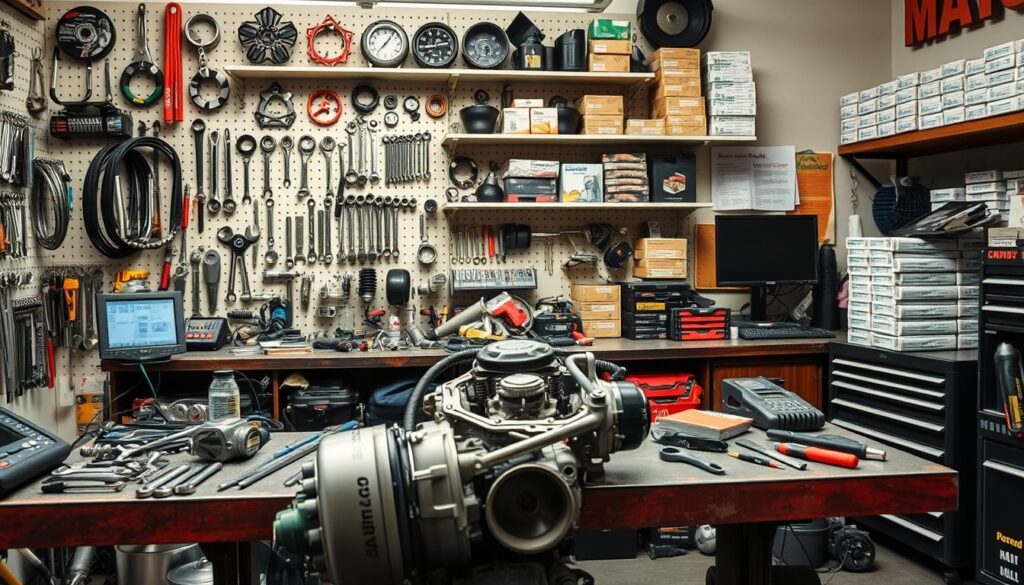
- Assess your budget and long-term repair costs.
- Check warranty and insurance requirements.
- Verify the availability of parts in your area.
- Consult local suppliers for expert advice.
| Factor | OEM Parts | Aftermarket Parts |
|---|---|---|
| Cost | Higher | Lower |
| Warranty | Included | Limited |
| Availability | Wide | Variable |
Making informed choices ensures your motorcycle remains safe and performs at its best. Whether you opt for oem parts or aftermarket solutions, always prioritize quality and compatibility.
Conclusion
Making the right choice for your motorcycle repairs ensures both safety and performance. Whether you opt for a part made by the original manufacturer, a third-party alternative, or a pre-owned component, each option has its pros and cons. Quality and fit are critical factors that directly impact your bike’s reliability on the road.
While oem parts guarantee precision and come with warranties, they often come at a higher cost. On the other hand, aftermarket options can be more affordable but may vary in quality. Used parts, though budget-friendly, require thorough inspection to ensure they’re in good condition.
Consider your budget, the repair requirements, and local supplier availability when making your decision. Always prioritize safety and compatibility to avoid future issues. If you’re unsure, seeking professional advice can help you make an informed choice that keeps your vehicle running smoothly.

